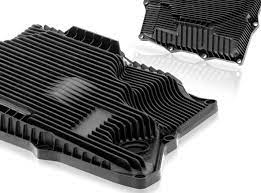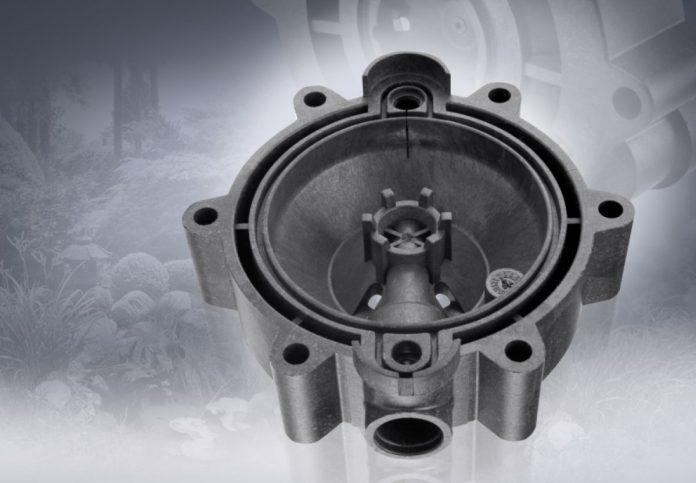Selecting the right material is crucial to achieving desired results with thermoplastic foam molding. The material choice affects the mechanical properties, thermal characteristics, chemical compatibility, and overall product performance.
Ahead in this guide, you’ll explore key factors to consider when choosing thermoplastic foam molding materials. You can make informed decisions to optimize manufacturing and product quality by understanding these factors and following best practices simultaneously.
Overview of Thermoplastic Foam Molding
Thermoplastic foam molding is a versatile manufacturing technique used across various industries. It involves injecting molten plastic into a mold and introducing a blowing agent to create a foamed core structure.
The resulting foam offers numerous benefits, like reduced weight, improved insulation properties, and enhanced energy absorption. It finds applications in automotive parts, packaging, construction, and more.
Continue reading this blog to explore the crucial factors that influence the selection of the right thermoplastic foam molding material.
Factors to Consider When Choosing Thermoplastic Foam Molding Materials

1. Mechanical Properties
When selecting a thermoplastic foam molding material, consider its mechanical properties to ensure the durability and functionality of your product. You should evaluate factors such as the required strength, flexibility, and impact resistance.
Assess the specific load-bearing needs and stress conditions the material will encounter during its intended use. For instance, automotive components that must withstand high-impact forces require a material with excellent impact resistance and strength.
2. Thermal Properties
Thermoplastic foam molding materials should also possess the appropriate thermal properties for your application. Evaluate the material’s temperature resistance, heat transfer capabilities, and thermal expansion properties.
Depending on the intended use, your foam material must either withstand or provide insulation against varying temperature ranges. Also, consider if the material can maintain its structural integrity and performance under extreme temperatures.
3. Chemical Compatibility
Consider the chemical compatibility of the material with substances it may come into contact with during its lifespan. Assess its resistance to chemical degradation and environmental factors such as UV radiation or moisture.
For instance, if the end product will be exposed to chemicals or harsh weather conditions, you’ll need a chemically resistant material with excellent weathering properties.
4. Manufacturing Process
Different foam molding techniques require materials with specific properties. Evaluate the suitability of the material for your chosen manufacturing process. Consider factors such as compatibility with tooling & equipment and the processing parameters required, including cycle times.
Remember that some materials may be better suited for certain molding techniques, such as injection molding or extrusion, based on their flow characteristics and ease of processing.
5. Cost and Availability
Determine the material cost and its impact on your budget. Consider the availability and sourcing options for the chosen material. Additionally, evaluate the long-term cost-effectiveness, including recyclability or reusability.
While considering the upfront cost of the material is essential, you should also assess its overall value in terms of performance and durability.
Carefully considering these factors when choosing a thermoplastic foam molding material can help ensure that the material aligns with your product requirements, manufacturing process, and budget constraints. Thus, you can create high-quality foam-molded products to meet the desired performance standards while offering long-term reliability.
Types of Thermoplastic Foam Molding Materials
1. Expanded Polystyrene (EPS): Ideal for packaging, construction, and consumer goods, EPS is lightweight, rigid, and offers excellent thermal insulation properties.
2. Polyurethane (PU): With outstanding cushioning, flexibility, and impact resistance, PU foam finds applications in automotive seating, mattresses, and insulation.
3. Polyethylene (PE): Often used in packaging, automotive components, and insulation, PE foam is lightweight, flexible, and resistant to chemicals and moisture.
4. Polypropylene (PP): Suitable for automotive, appliance, and industrial applications, PP foam offers good stiffness, low moisture absorption, and chemical resistance.
Best Practices for Selecting Thermoplastic Foam Molding Materials
Research and Testing: Thoroughly research available materials and conduct testing to determine their suitability for your specific projects. Engaging with material suppliers and experts can help you gain insights and gather data.
Collaboration: Collaborate with material suppliers and molders to align their expertise with your goals. Their input can help refine your material selection process.
Prototype Evaluation: Either create prototypes or request samples to assess the performance of potential materials. Evaluating their mechanical, thermal, and chemical characteristics can help validate their suitability.
Final Thoughts
Choosing the right material is a critical step in thermoplastic foam molding. At China Casting Orlando, we make informed decisions by considering factors like mechanical and thermal properties, chemical compatibility, manufacturing requirements, and cost.
Researching, collaborating with experts, and evaluating prototypes further allow us to ensure the selected material meets your project’s needs. With these best practices, we enhance the performance and durability of your foam-molded products.
Get started with the experienced engineers of iMold USA, LLC to maximize the potential for Thermoplastic Foam Molding for your business.
